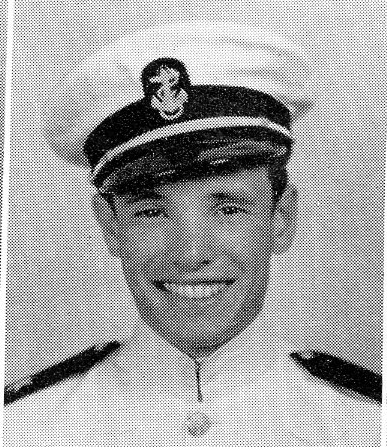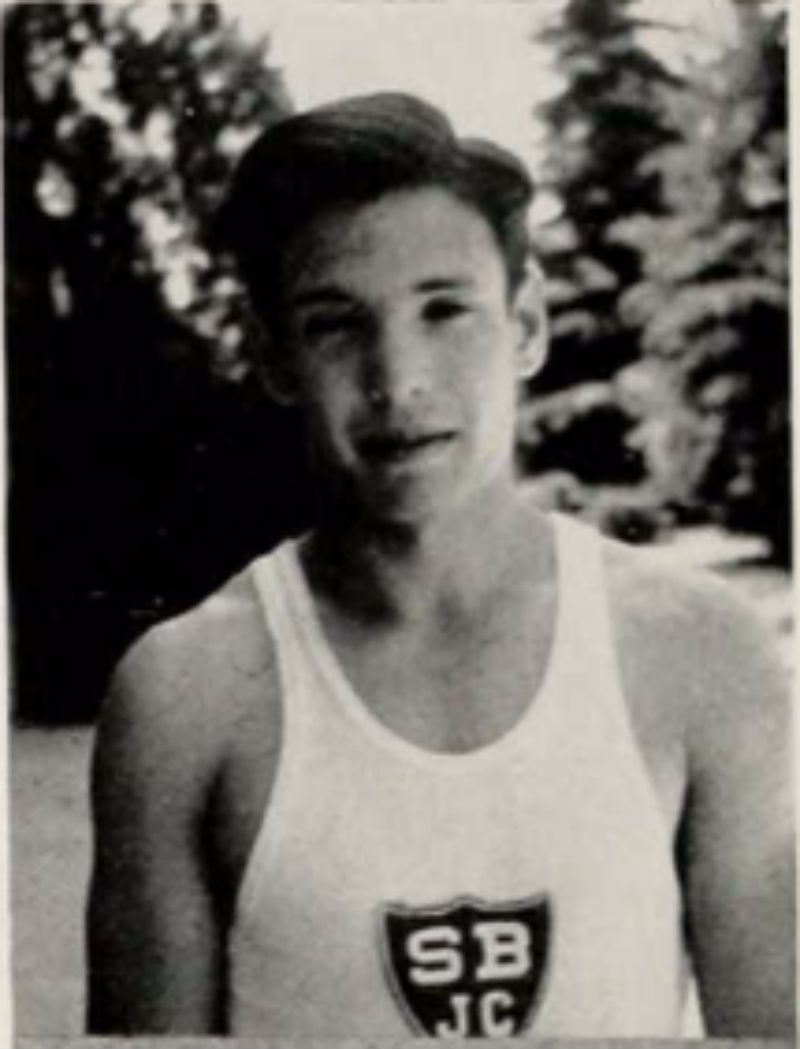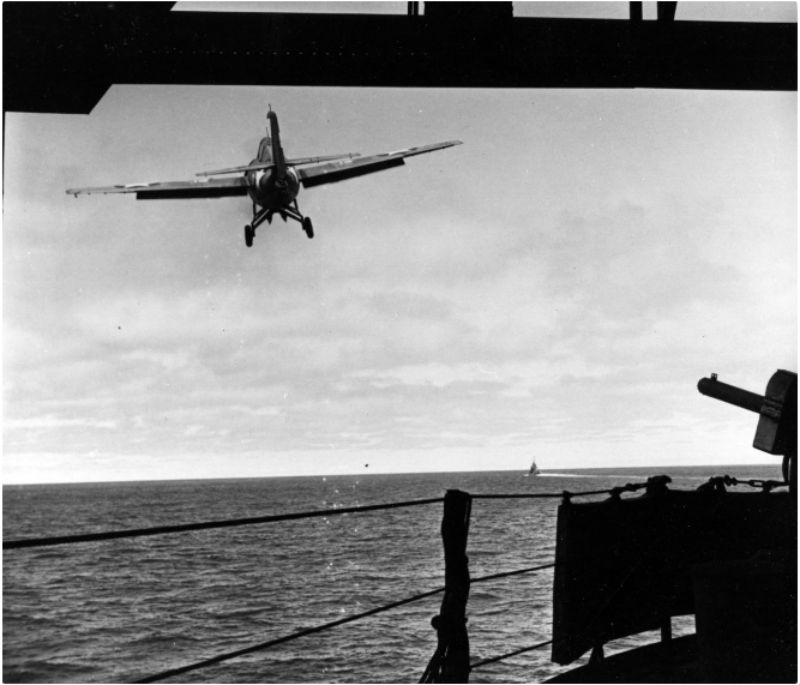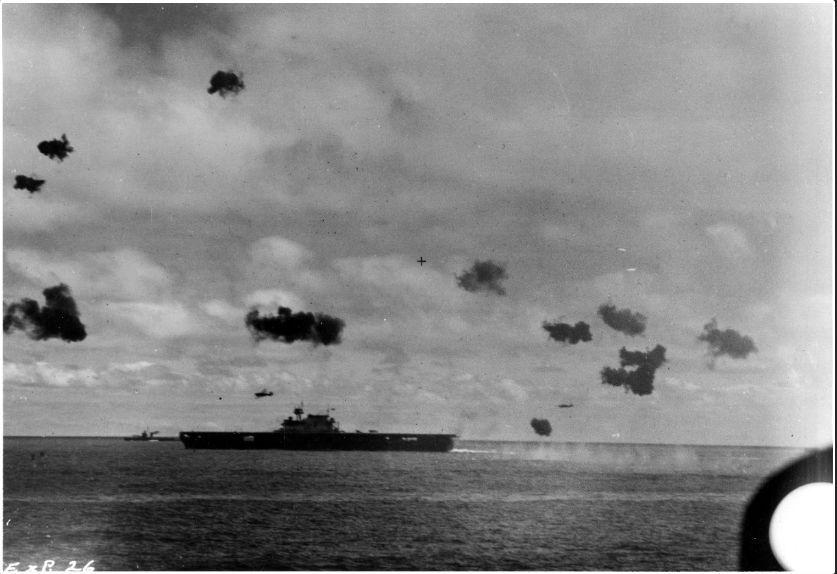Ensign George Aurand Hopper

- Unit: U.S. Naval Reserve
- Service Number: 0-106016
- Date of Birth: January 30, 1919
- Entered the Military: March 27, 1941
- Date of Death: June 5, 1943
- Hometown: Banning, California
- Place of Death: Pacific Ocean
- Award(s): Purple Heart
- Cemetery: Courts of the Missing, Court Three, Honolulu Memorial. National Memorial Cemetery of the Pacific, Honolulu, Hawai'i
James Monroe Middle School
2016-2017
Early Life
On January 30, 1919, George A. Hopper, Jr., was born in Torrance, California. His parents, George A. Hopper, Sr., and Ruth Davis Hopper, owned a cafe in Banning, California. Hopper grew up there in the family home along with his younger sister, Kathryn.
Hopper attended grammar school and high school in Banning. An average student, he competed on his school’s basketball team. He also learned to love golf. He spent his summers cooking in his parents’ cafe.
Following his 1936 graduation from Banning High School, Hopper borrowed some money from his parents and enrolled at San Bernardino Valley Union Junior College (SBVUJC). He continued to be an average student but stood out in sports. He was named captain of the SBVUJC gymnastics team. Hopper usually stayed out of trouble but was arrested once and fined for disturbing the peace after getting into an argument over gambling with some locals in Crestline, California. Despite this, Hopper’s friends and family considered him a model citizen. The local undersheriff of Banning even wrote him a letter of recommendation when he decided to join the U.S. Navy.
Every summer between 1936 and 1939 Hopper took part in the Citizens’ Military Training Camp in Monterey, California. There he gained military training without actually joining the service. In his spare time, he learned how to fly and earned a civilian pilot’s license. These experiences may have played a role in Hopper’s decision to become a military pilot.


Military Experience
Hopper enlisted in the U.S. Navy on March 27, 1941, almost nine months before the U.S. entered World War II. Entering as a seaman, Hopper underwent training in California before being transferred to Pensacola, Florida, where he became an Aviation Cadet and began flight training. By October, he earned his wings as a naval aviator and was commissioned as an ensign.
When the Japanese attacked Pearl Harbor on December 7, 1941, Hopper was training with the Advanced Carrier Training Group, Pacific Fleet. With the United States now at war, Hopper quickly finished his training, and prepared to leave for his next assignment.
Before he headed to war, Hopper married Ramona Evans. The daughter of a retired U.S. Navy sailor turned rancher, Evans attended the same college as Hopper. At age 22, Hopper and his 18-year-old bride said their marriage vows in Arizona in late December 1941. They took a short trip back to California to visit family and friends. The newlyweds only had a short time together. Ramona stayed behind in California while Hopper left to fight the Japanese.
Initially assigned to fly dive bombers with Bombing Squadron Two (VB–2), Hopper was instead ordered to report for duty with Fighter Squadron Forty–Two (VF–42) flying fighter aircraft. As a fighter pilot, it would be Hopper’s job to protect American ships and planes from his counterparts in the Japanese military.
Before Hopper reported to his new squadron, events in the Pacific forced a change of plans. Fighter Squadron Two (VF–2) needed pilots to fill its ranks, so Hopper was temporarily added to their roster. The move brought Hopper one step closer to fighting in the war.
The Battle of the Coral Sea
Hopper first saw action at the Battle of the Coral Sea in May 1942. Hopper did not shoot down any enemy aircraft, but his section leader shot down two planes while Hopper flew nearby. He was close enough to see the Japanese aircraft burst into flames and crash into the ocean.
At Coral Sea, the ship to which Hopper’s squadron was assigned, the USS Lexington, was sunk. This left Hopper and the other members of VF–2 without planes to fly or a ship from which to fly them. Hopper was released to follow his original orders. He reported to VF–42 on May 16, 1942.
Once again, however, the needs of the U.S. Navy changed the young ensign’s plans. With another battle against the Japanese on the horizon, Hopper and several other pilots from VF–42 were temporarily reassigned to Fighting Squadron Three (VF–3) aboard the USS Yorktown.
The Battle of Midway
Though it had been severely damaged during the Battle of the Coral Sea, the hastily repaired Yorktown was one of three American aircraft carriers sent to stop the Japanese navy from taking over Midway Atoll. Having discovered Japanese plans thanks to some creative intelligence gathering, the Americans knew the Japanese wanted to use Midway as a forward base from which to attack other U.S. targets. The Japanese also hoped to draw the U.S. fleet into battle, destroy several of its aircraft carriers, and gain more control over the Pacific. The stage was set for one of history’s most important naval battles.
On the afternoon of June 4, 1942, as aircraft from the U.S. and Japanese fleets attacked each other, Hopper and several other pilots from VF–3 took off from the Yorktown to defend against a wave of Japanese attackers. Hopper’s plane cleared the deck of the Yorktown, but as he attempted to gain speed and altitude a Japanese plane fired on him. Hopper’s plane crashed into the ocean. No one witnessed Hopper bail out, or reported seeing him in the water after his plane crashed.
.jpg)


Eulogy
Following the Battle of Midway, the U.S. Navy conducted a search for men who ended up in the ocean when their planes were shot down or when their ships sank. Hopper was not among those recovered. The Navy officially listed him as Missing in Action.
Hopper’s family held out hope that he was alive somewhere, perhaps as a prisoner of the Japanese. Hopper’s wife and mother continued to receive checks each month from the Navy—pay that Hopper was due. Then, beginning June 5, 1943, the checks suddenly stopped coming. In keeping with U.S. Navy policy, after twelve months and one day of being listed as missing, Hopper’s status was changed to Killed in Action.
Today, George A. Hopper, Jr. is remembered on memorials in Banning, California, as well as at the Courts of the Missing, Court Three, Honolulu Memorial, in Honolulu, Hawaiʻi. While his body may have come to rest in the waters of the Pacific Ocean, the memory of his service and sacrifice is preserved through these memorials, and the country that he once helped to defend.

Reflection
Bibliography
Arizona. Yuma County. Marriage License. Digital Images. ancestry.com.
California. Riverside County. 1940 U.S. Census. Digital Images. 1940census.archives.gov.
The Flight Jacket. Naval Air Station Pensacola, 1941. Emil Buehler Library, National Naval Aviation Museum.
“George A. Hopper, Jr.” American Battle Monuments Commission. Accessed November 5, 2016.
www.abmc.gov/decedent-search/hopper%3Dgeorge-0.
George A. Hopper, Jr., Official Military Personnel File, Department of the Navy, Records of the Bureau of Naval Personnel, RG 24, National Archives and Records Administration – St. Louis
Junior Quad Yearbook. San Bernardino Valley Union Junior College, 1940. San Bernardino Junior College Library.
Lundstrom, John B. The First Team: Pacific Naval Air Combat from Pearl Harbor to Midway. Annapolis: Naval Institute Press, 1984.
Photograph of George A. Hopper, Jr.’s name on the Honolulu Memorial. American Battle Monuments Commission, 2016.
Roy, William G. A Grumman F4F-4 Wildcat fighter (Bureau # 5244) takes off from USS Yorktown (CV-5) on combat air patrol, during the morning of 4 June 1942.. Photograph. June 4, 1942. National Archives and Records Administration (80-G-312016). Image.
San Bernardino County Sun. “Marriage Announcement.” December 29, 1941. www.newspapers.com/image/48953386/?terms=George%2BA.%2BHopper%2C%2BJr.
Two Type 97 shipboard attack aircraft from the Japanese carrier Hiryu fly past USS Yorktown (CV-5), after dropping their torpedoes during the mid-afternoon attack...Photograph. June 4, 1942. National Archives and Records Administration (80-G-32241). Image.
WW II Action and Operational Reports; Records of the Office of the Chief of Naval Operations, Records Records Relating to Naval Activity During World War II, Record Group 38 (Box 1145); National Archives at College Park, College Park, MD.
WW II Action and Operational Reports; Records of the Office of the Chief of Naval Operations, Records Records Relating to Naval Activity During World War II, Record Group 38 (Box 1535); National Archives at College Park, College Park, MD.
WW II Action and Operational Reports; Records of the Office of the Chief of Naval Operations, Records Records Relating to Naval Activity During World War II, Record Group 38 (Box 434); National Archives at College Park, College Park, MD.
WW II Action and Operational Reports; Records of the Office of the Chief of Naval Operations, Records Records Relating to Naval Activity During World War II, Record Group 38 (Box 452); National Archives at College Park, College Park, MD.
This profile was researched and created with the Understanding Sacrifice program, sponsored by the American Battle Monuments Commission.

